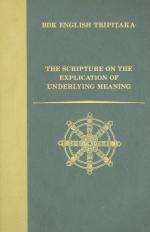|
This section contains 383 words (approx. 1 page at 400 words per page) |

|
Nothing Gold Can Stay (poem) Summary & Study Guide Description
Nothing Gold Can Stay (poem) Summary & Study Guide includes comprehensive information and analysis to help you understand the book. This study guide contains the following sections:
This detailed literature summary also contains Quotes and a Free Quiz on Nothing Gold Can Stay (poem) by .
The following version of this poem was used to create this guide: Frost, Robert. “Nothing Gold Can Stay.” New Hampshire (Henry Holt & Company, 1923).
Note that all parenthetical citations within the guide refer to the lines of the poem from which the quotations are taken.
“Nothing Gold Can Stay” is a 1923 poem by Robert Frost composed in a single stanza of rhyming iambic trimeter. The poem was originally published in The Yale Review and later republished in New Hampshire, one of Frost’s most famous and critically lauded collections. “Nothing Gold Can Stay” contains many hallmarks of Frost’s poetic style – its language is simple, its content focuses on the natural world, and its form is precise in meter and rhyme scheme. The poem centers on its speaker’s description of the changes of the natural (specifically botanical) world, these musings serving as an entry point into a broader contemplation of impermanence, transience, and man’s fall.
Robert Frost’s place in American poetry is difficult to categorize. Although he wrote the majority of his poems in the first half of the twentieth century, a time in poetic history dominated by the rise of modernism, his style is also reminiscent of nineteenth-century verse. The difference between Frost and his modernist contemporaries is most evident in his poetic form – while the modernists favored free verse, an unrhymed and metrically irregular form of which Frost was famously dismissive, Frost’s poetry is famous for its frequent use of highly specific rhyme and metrical schemes. Despite his traditional style, however, the content of Frost’s poetry is more similar to the content of modernist poetry than nineteenth-century poetry. Like the modernists, Frost often wrote about accessible everyday subjects, blending the modernists’ image-centric focus on the banal with the formal poetic precision of more traditional literary movements.
Frost’s body of work is famously regional. Although born in San Francisco, Frost moved to Massachusetts at a young age, and New England forms the backdrop for the majority of his poems. Frost’s poems blends the simplicity and intensity of rural life with the syntactical precision of nineteenth-century American poetry and the personal, image-focused content of modernism, these three influences converging in a poetic corpus that is among the most celebrated of all American poets.
Read more from the Study Guide
|
This section contains 383 words (approx. 1 page at 400 words per page) |

|



